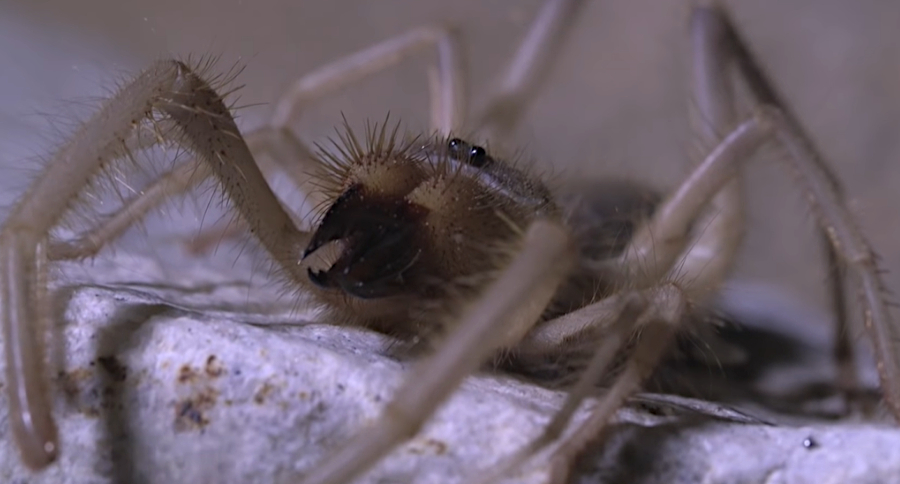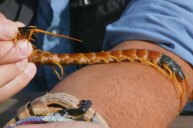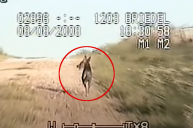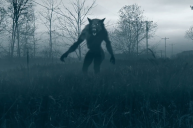The camel spider has a razor-sharp bite!
Remember back during the start of the war in Iraq when photos of "camel spiders" started making the rounds on the Internet? It was the first viral phenomenon I remember seeing. Most of the photos of these strange desert creatures utilized a forced perspective which made the camel spiders look much larger than they were.
While many people passed off camel spiders as being a thing our troops serving over seas had to deal with, it turns out they are right here at home in the United States too. It also turns out they are not spiders at all.
One of our favorite urban legend dispelling YouTube personalities, Coyote Peterson, breaks down the myths about these strange creatures when he finds one in the Arizona desert. Oh, and in typical Coyote fashion, he also allows it to chew on his finger, just to show they are not dangerous.
There you have it, myths about one of the Internet's most legendary creatures completely dispelled in less than five minutes. We like how Coyote addresses all the urban legends that seem to pop up about most insects and arachnids. In this case however, we were surprised to learn the Solpugid is not a spider at all. Who would have thought?
If you remember some of the urban legends from the early 2000s, they often claimed that camel spiders had incredible jumping abilities because they would leap onto the belly of a camel and then feast on it like an oversized tick. The rumors also claimed these creatures had a venom containing an anesthetic to numb the victim to pain and allow them to feast. Why am I not surprised to learn that both "facts" were completely made up? It turns out that as ugly and fearsome as this creature appears, it has no venom at all!
Another thing I remember that was claimed about the camel spider was that they grow to the size of a plate. Well, that turns out to be a total myth too. Coyote said this was the largest he had ever seen. You must be wary of photos where someone is holding something with an outstretched arm in front of the camera.
Even though this creature is not venomous, we still do not want to be bitten by it. Coyote's bite looked most unpleasant. Once again, we are glad it is him and not us. Thank you for dispelling some of the myths behind this creature Coyote!
For more outdoor content from Travis Smola, be sure to follow him on Twitter and check out his Geocaching and Outdoors with Travis YouTube channels.
NEXT: RELOADING AN M1 ABRAMS TANK IS A STRESSFUL JOB
WATCH
https://rumble.com/embed/u7gve.cc4f1l/





